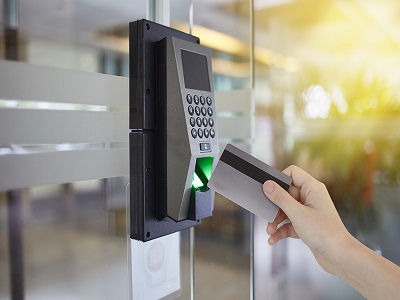
ACCESS CONTROL SYSTEMS
Access control systems are security solutions designed to regulate who can enter or exit a physical location, whether it's a building, a room, or a restricted area within a facility. These systems use various methods to authenticate and authorize individuals, such as employees, visitors, or residents. Some common components and methods used in access control systems include:
1. **Credentials**: These are used to identify individuals seeking access. Examples include keycards, access badges, PIN codes, biometric data (such as fingerprints or iris scans), and mobile credentials (using smartphones or smartwatches).
2. **Card Readers and Keypads**: These devices are used to capture credential information, such as scanning keycards or entering PIN codes.
3. **Access Control Panels**: These are the central hubs of an access control system, where credentials are verified and access permissions are managed. Access control panels are often connected to card readers, keypads, and other entry points.
4. **Locking Mechanisms**: Access control systems can integrate with various types of locks, including electronic locks, magnetic locks, and electric strikes. These locks can be remotely controlled to grant or deny access.
5. **Access Control Software**: This software is used to manage access control permissions, monitor access events in real-time, generate reports, and configure system settings. It often includes features for managing user credentials, defining access levels, and setting up access schedules.
6. **Biometric Scanners**: These devices capture unique physical characteristics of individuals, such as fingerprints, facial features, or iris patterns, to verify their identity.
7. **Intercoms and Video Surveillance**: Some access control systems include intercoms or video surveillance cameras at entry points, allowing security personnel to visually confirm the identity of individuals before granting access.
8. **Integration with Other Security Systems**: Access control systems can be integrated with other security systems, such as intrusion detection systems, alarm systems, and visitor management systems, to provide a comprehensive security solution.
9. **Audit Trails**: Access control systems often maintain detailed logs of access events, including information such as the time, date, and identity of individuals who accessed a particular area. These audit trails can be useful for investigating security incidents and monitoring compliance with access policies.
Access control systems can be tailored to meet the specific security requirements of different environments, from small businesses to large enterprises, government facilities, educational institutions, and residential complexes. They play a crucial role in preventing unauthorized access, protecting assets, and ensuring the safety of occupants within a controlled environment.


